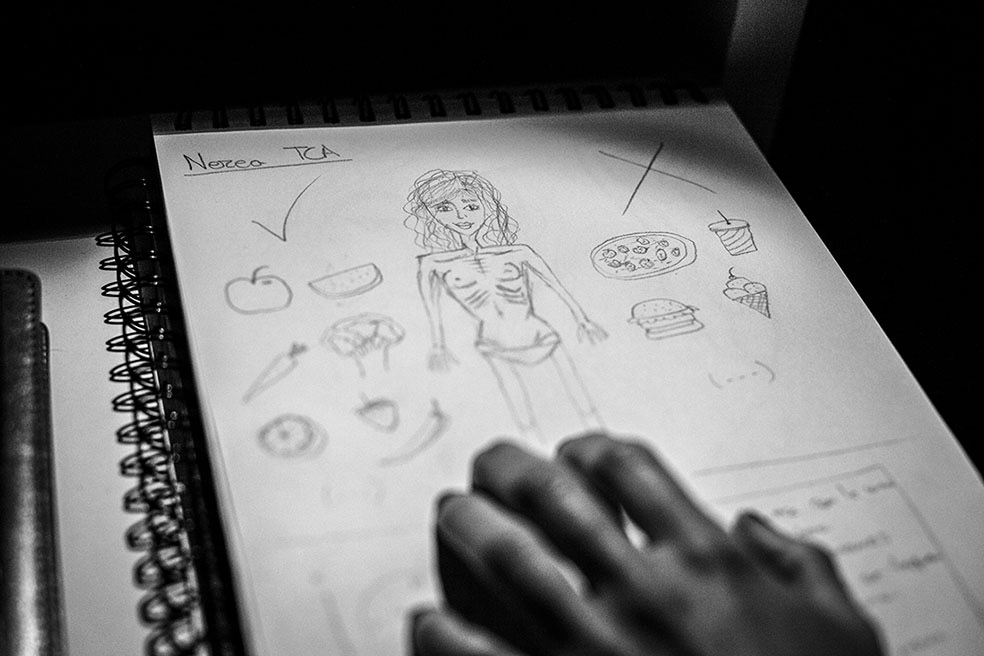In today’s society of social networks these thoughts tempt millions of people whose ambition to turn their personal appearance into a brand identity pushes an obsession for the image that, however, comes from time ago. In 1689 Dr. Richard Morton sees the first documented patient of what he would call nervous consumption. Years later, in the late 19th century, theorists from the American Psychiatric Association would give medical reports of what we know today as Anorexia Nervosa. In the 1970s, when thinness was sought as a canon of beauty, a considerable increase in eating disorders or ACTs began.
Anorexia is a mental illness where the person feels an acute fear of gaining weight or gaining weight, presenting abnormal behaviors in terms of diet, weight, volume and body silhouette, having a distorted view of reality and itself. Prolonged fasting produces other derived pathologies, such as osteopenia, epilepsy, jaundice, behavioural alterations, depression, anxiety and sometimes aggressive behaviour.

According to Red Cross reports, 1 out of every 100 women, the vast majority of whom are teenagers, suffer from anorexia. Some cases are taken to the extreme, becoming a chronic disease, causing work, social and family dysfunctions. At the same time, during the course of the illness and the recovery process, both those affected and those around them suffer intensely.
There are a series of risk factors in adolescence such as early onset of puberty, sexualization of childhood, being overweight, living in an environment excessively concerned with aesthetics (beauty contests, modeling, elite sports, etc.), early access to the Internet and social networks. The social pressure to adapt to slim models and the desire to accept culture about weight control, diets and slimming formulas without a qualified health check are increasingly increasing behaviors. In Spain there are around 400,000 people who suffer from ACT, mostly young people under the age of 24 where the incidence of the disease has increased by 15% in children under 12, in the last four years. Nine out of ten diagnoses are young women, although it is now common for boys to begin to develop risk patterns that could lead to disorders.
Prevention is key in eating disorders, the family being a very important pillar. In this sense, more information is needed on the disease, the development of strategies for action and advice, with greater public involvement in prevention and early diagnosis.

David Arribas is a documentary and freelance photographer based in Madrid. Spain.
Website: davidarribas.com










